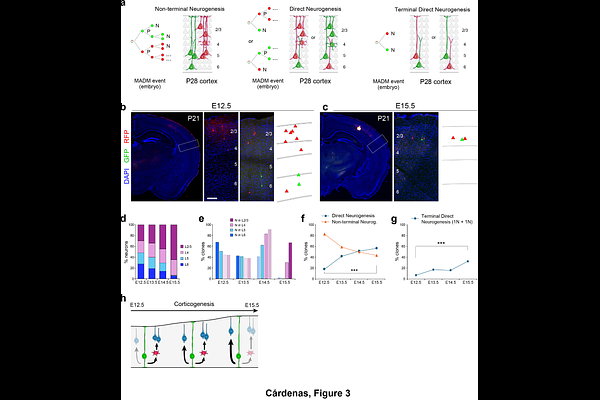Early Indirect Neurogenesis transitions to late Direct Neurogenesis in mouse cerebral cortex development

Early Indirect Neurogenesis transitions to late Direct Neurogenesis in mouse cerebral cortex development
Cardenas, A.; Celik, I.; Espinos, A.; Streicher, C.; Lopez-Gonzalez, L.; Del Valle Anton, L.; Fernandez, V.; Amin, S.; Negri, E.; Fernandez Ortuno, E.; Hippenmeyer, S.; Borrell, V.
AbstractThe cerebral cortex must contain the appropriate numbers of neurons in each layer to acquire its proper functional organization. Accordingly, neurogenesis requires precise regulation along development. Cortical neurons are made either directly by Radial Glia Cells (RGCs) that self-consume, or indirectly from RGCs via Intermediate Progenitor Cells (IPCs) and largely preserving the RGC pool. According to the standing model of cortical development, Direct Neurogenesis predominates at early stages of development, and progressively shifts to Indirect Neurogenesis, which predominates at late stages. However, neurogenesis at early stages should be compatible with RGC amplification, and neurogenesis at late stages needs to involve RGC consumption, which seems in conflict with the standing model. Here we studied the modes of neurogenesis along cortical development using multiple approaches, including birthdating, live imaging and MADM clone labeling. Contrary to the established dogma, our data show that Indirect Neurogenesis clearly predominates at early developmental stages, gradually shifting to Direct Neurogenesis at late stages. These findings challenge the current model of cortical neurogenesis, and prompt a re-evaluation of previous and ongoing work about the genetic and molecular mechanisms regulating this process.